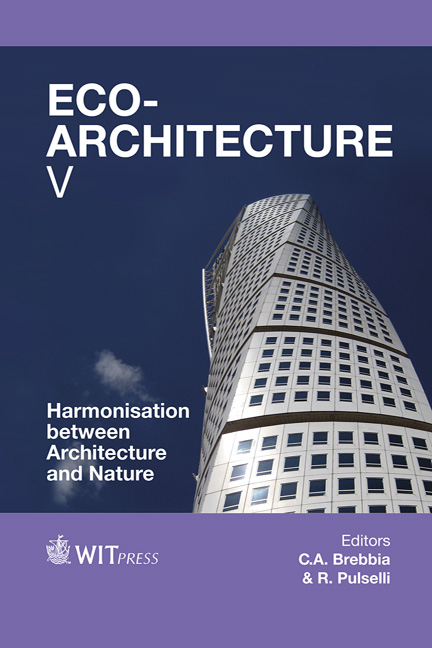Passive House For A Desert Climate
Price
Free (open access)
Transaction
Volume
142
Pages
12
Page Range
13 - 24
Published
2014
Size
1,489 kb
Paper DOI
10.2495/ARC140021
Copyright
WIT Press
Author(s)
I. Marincic, J. M. Ochoa, M. G. Alpuche
Abstract
The first phase of the project presented in this paper consisted of an analysis of the current conditions of the users of social housing units, and has been carried out in different Mexican climatic zones. This diagnosis focused primarily on identifying the users’ satisfaction relative to diverse aspects of the house, such as the function of the space, safety, security, environmental conditions, and health conditions, among others. Furthermore, a study has been carried out to find the adaptive thermal comfort range for each climate and the target population. Another phase of the project was the development of design strategies for social (that is, low-cost) housing units. With the information and results obtained from the low-cost housing developments in Hermosillo, in the State of Sonora in northwest Mexico, a low-cost house model has been constructed for experimental and demonstrative purposes. Passive thermal strategies for hot dry climates have been applied and studied, also taking into account regional (including cultural and regulatory) needs and economic limitations, in order to improve indoor thermal conditions without the use of air conditioning devices. The test house – 35 m2 of construction area (similar to the existing low-cost houses) – has been constructed on a university campus. Design strategies have been based on the local desert climate: those strategies mainly comprised minimizing heat gains with an adequate orientation, providing solar protection devices, minimizing conduction gains, providing thermal inertia, and allowing nocturnal heat loss. Microclimatic thermal strategies have been applied in the courtyard and surroundings of the building. Indoor thermal conditions were monitored for more than one year. Air temperature measurements were taken every 10 minutes throughout the study period. Measurements of summer and winter indoor conditions (which are the most representative local seasons) are presented, together with meteorological data, obtained from the university’s weather station (LEMA). Indoor temperatures are compared with the adaptive temperature comfort range obtained for the same climate and population, in order to evaluate the effectiveness of the applied strategies.
Keywords
bioclimatic house, adaptive thermal comfort, desert climate





